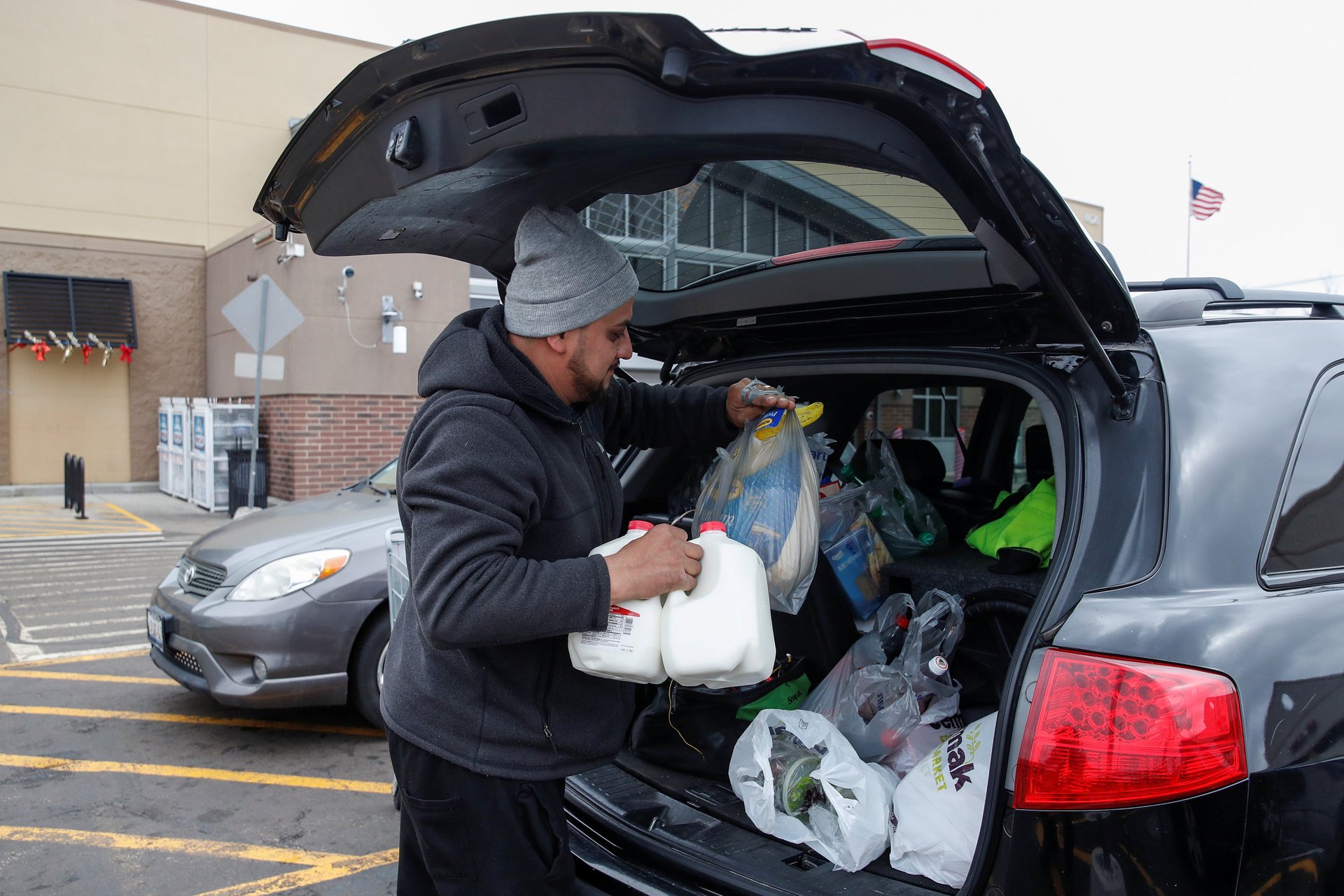The economic rationale for whether you deserve a stimulus check
The US House of Representatives finally passed a long-awaited Covid stimulus package on Saturday, with a relatively small (yet highly popular) part of that package going to a third bout of stimulus checks for taxpayers. As the bill moves on to the Senate, a pressing question remains: Who should receive the next round of checks?


The US House of Representatives finally passed a long-awaited Covid stimulus package on Saturday, with a relatively small (yet highly popular) part of that package going to a third bout of stimulus checks for taxpayers. As the bill moves on to the Senate, a pressing question remains: Who should receive the next round of checks?
As it stands, the Democratic House bill includes $1,400 checks for individuals making up to $75,000, plus $1,400 for each dependent, the same cutoff as in the previous stimulus rounds. Beyond those income thresholds, the payments phase out. Individuals earning over $100,000 per year and couples earning over $200,000 would not receive a check. That’s despite efforts by Republicans and Democratic budget hawks to rein in spending, and improving economic news, which suggest Americans are better off than when they got the first two rounds of checks.
The logic behind the current cutoff stems from two components: who is hurting the most, and who will spend the money. The White House and Democratic lawmakers mostly got their answer from data compiled by a triad of economists—Raj Chetty, John Friedman, and Michael Stepner of Harvard University’s Opportunity Insights—who teamed up early in the crisis to analyze how consumers spent the first two rounds of stimulus checks to better predict needs going forward.
Who will spend their stimulus check?
The economists’ study, based on consumer credit and debit card data, found that households with incomes above $78,000 spent very little of their second stimulus check, at least not immediately. Over the first month after they got them, these households spent only $45 of the $600 they received.
This constituted a big drop-off from what higher income households spent after receiving the first stimulus check. Given that this stimulus arrived at a time when unemployment was skyrocketing and that employment and savings have since mostly rebounded for higher incomes, Chetty et al argued that the next round of stimulus should target lower-income households more likely to spend the funds, while directing the program savings toward other types of support. Republican lawmakers agreed, and in the Senate, Democratic senator Joe Manchin and Republican senator Susan Collins passed a bipartisan amendment to prevent “upper income” households from receiving a check, though it didn’t define what that meant. Collins has since said that “putting a lower cap than the House put on for the stimulus checks” is still on the table.
Who deserves a stimulus check?
But Biden and House Democrats have sided with other economists who question those takeaways. It’s hard to judge who deserves relief based on income alone, since Covid-19 has hit some areas harder than others, and the cost of living varies widely by region. For instance, tourism-dependent Kahului, Hawaii has suffered double-digit unemployment during Covid-19, notes former Federal Reserve economist Claudia Sahm, but its median income of $81,000 is above the lower income cutoff for checks. In New York City, the metro area with the highest number of Covid-19 cases, she notes, the median income is $83,000.
Sahm believes lowering the cutoff below $75,000 would hurt those families. She points to a longer history of research from past stimulus programs, and the sharp uptick in January retail sales, which both suggest that a wide swath of consumers are still spending their checks. “The argument that based on economics we should target them more doesn’t stand,” says Sahm.
There are also gaps to fill from unreliable jobless benefits. Sahm points to data showing that half of US households lost income from work last year, but that only one fifth received unemployment benefits. The gaps were largest among lower-income families, but many above the $75,000 income level—who in the current phaseout of checks would receive partial payment—still lost out.
Loss of income puts financial pressure even on wealthier families, says Sahm, whose spending is arguably tied more to household liquidity and savings.
How should people spend stimulus checks?
Opportunity Insights’ data also doesn’t account for households that used stimulus money to pay down debt on loans, rent, and mortgages. Some 12 million families were an average of $6,000 behind on rent or utilities as of January. “There are people who need those checks to pay their mortgage and their kids’ tuition. They don’t tug at the heartstrings, but they really do need the money,” says Sahm.
And paying down debt is still a boon to the economy, others say, another reason for keeping the cutoff where it is despite the improving outlook. Given that nearly half of Americans couldn’t cover an unplanned event of savings, says Greg McBride, chief financial analyst for Bankrate.com, the stimulus will be “more beneficial over the longer-term if households can regain stable financial footing.”
Treasury secretary Janet Yellen supports that thinking. “The truth is, there are pockets of pain that go beyond what can be reached in those highly targeted ways,” Yellen said this week about limiting the checks to fewer households. The half a million people who wouldn’t receive a more targeted check are sure to agree.